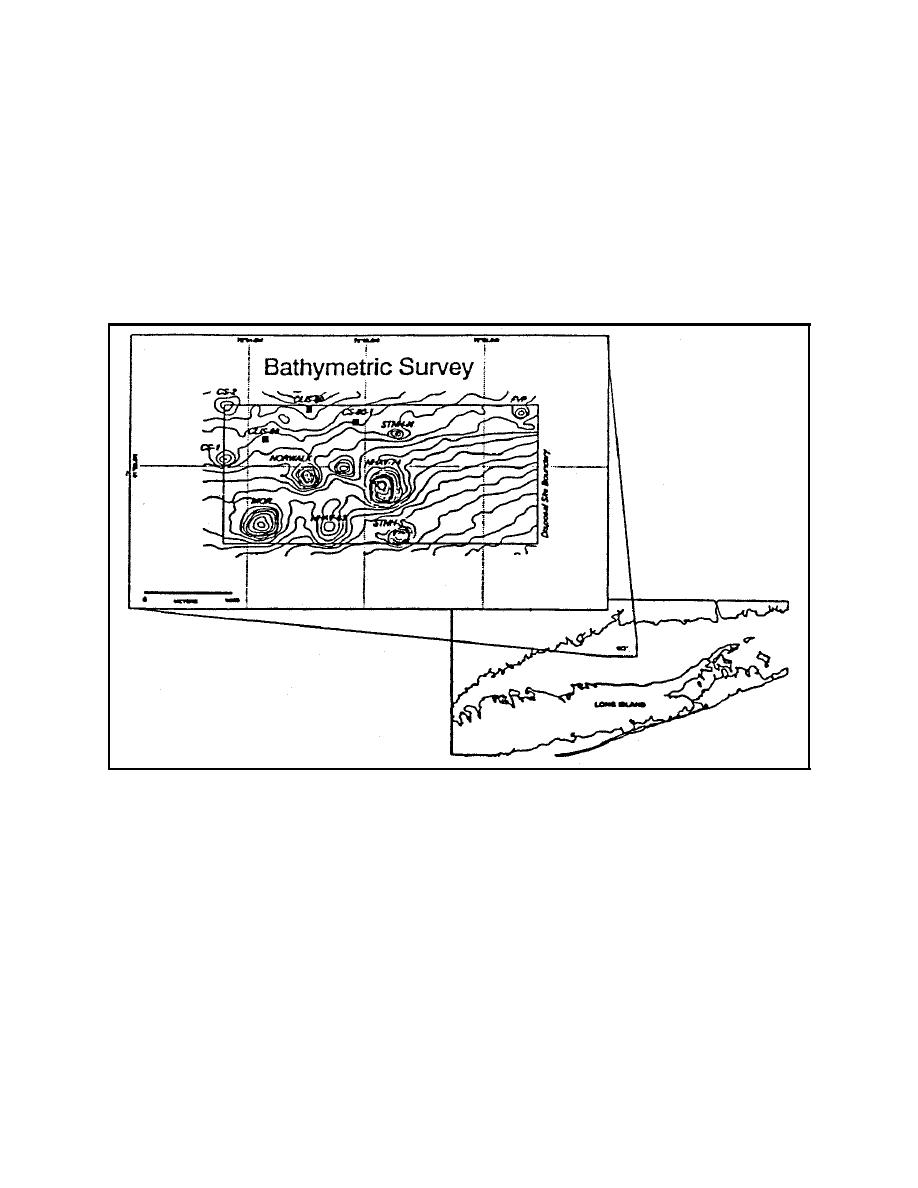 |
||
|
|
||
|
Page Title:
Figure 30. Central Long Island Sound disposal site (SAIC 1995a) |
||
| |||||||||||||||
|
|
 Four LBC projects are the focus of the SAIC (1995a) report, and they
all were conducted in the CLIS disposal site. The four NED projects
(Stamford-New Haven, Mill-Quinnipiac River, Norwalk, and Cap Sites 1
and 2) are located within the boundaries of the CLIS disposal site, which
is an area of 2 nm2 located approximately 6.2-miles south-southeast of
New Haven, CT, in water depths between 56 and 82 ft (Figure 30). Base-
line data sets had previously been collected and were available for use in
the capping projects as described in SAIC (1995a). Two other recent cap-
ping projects not discussed in SAIC (1995a), Harbor Village-Branford
River (CS 90-1) and New Haven (CLIS-NHAV 93), have also been con-
ducted in CLIS.
Figure 30.
Central Long Island Sound disposal site (SAIC 1995a)
The Stamford-New Haven project was the first planned capping project
at a subaqueous site in United States coastal waters. This project involved
disposal of contaminated material from Stamford Harbor followed by cap-
ping with slightly less contaminated material from New Haven Harbor at
two sites within CLIS. The success of the 1979 Stamford-New Haven pro-
ject led to increased use of capping in New England under the DAMOS
program.
The Stamford-New Haven North and South (STNH-N and STNH-S)
and the experimental Cap Site 2 (CS-2) were the most successful of the
early capped mounds. Bathymetry and SPC data showed that the contami-
nated material was thickly covered with capping material from the center
to the outside radii. Point dumping of mound material and subsequent
109
Chapter 10 Case Studies
|
|
Privacy Statement - Press Release - Copyright Information. - Contact Us - Support Integrated Publishing |